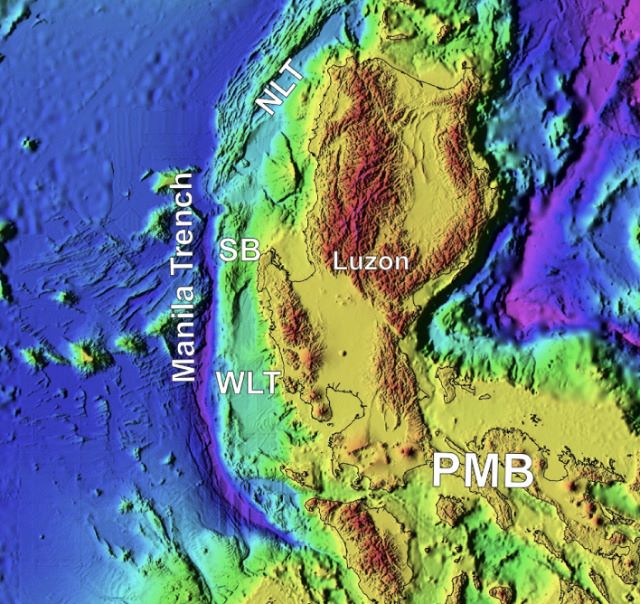UP geologists discover possible gas hydrates in Manila Trench

Geologists from the University of the Philippines (UP) discovered possible deposits of gas hydrates deep beneath the Manila Trench, which could potentially be used as the country’s alternative energy resource.
Gas hydrates are ice-like substances that usually only form beneath the seafloor, where the pressure is high and the temperature is just below the water’s freezing point of 0°C.
They contain roughly twice the carbon contained in all reserves of coal, oil, and conventional natural gas combined, making them a potentially viable power source, according to the United States National Oceanic and Atmospheric Administration (NOAA).
In searching for its possible locations, Elisha Jane Maglalang, Dr. Leo Armada, Madeleine Santos, Karla May Sayen, and Dr. Carla Dimalanta of the UP Diliman College of Science National Institute of Geological Sciences used sound waves to map out the seismic reflections of the gas hydrates called bottom-simulating reflectors (BSRs).
The researchers said that a total area of around 15,400 square kilometers in the trench, or about the size of Palawan, could contain gas hydrates. They also estimated that the substances might be around 200 to 500 meters below the seafloor.
“The western Philippines has vast potential for this unconventional energy resource,” the UP geologists said.
Warning
However, the researchers warned that gas hydrates also pose geological and environmental threats as they may dissociate and melt when the conditions in which they form change.
This usually occurs during earthquakes, as they noted that the Manila Trench is an active margin.
Melting gas hydrates may trigger seafloor disturbances that could lead to underwater landslides and tsunamis, they said.
Also, gas hydrates contain huge amounts of carbon and methane, a greenhouse gas that can harm the environment when released into the atmosphere.
A cubic meter block of gas hydrates has at least 160 cubic meter blocks of methane in its gas form, equivalent to 14% of an average Filipino’s methane emission in 2021, they added.
“Therefore, it is essential to determine the distribution and stability conditions of gas hydrates offshore of the Philippines,” the researchers said.
While BSRs are telltale signs of gas hydrates, the researchers said they are still not definitive.
They are now conducting additional investigations in other offshore places in the country to expand their geophysical dataset and are spearheading efforts to foster marine geophysics in the country.
“Future drilling of offshore targets will be instrumental in confirming methane hydrate occurrence. These investigations offer a vital opportunity to develop our indigenous energy wealth,” the UP researchers said.
“These efforts will contribute not only to the advancement of scientific knowledge but also to the development of the expertise of Filipino geoscientists in marine geophysics,” they added. — VBL, GMA Integrated News





